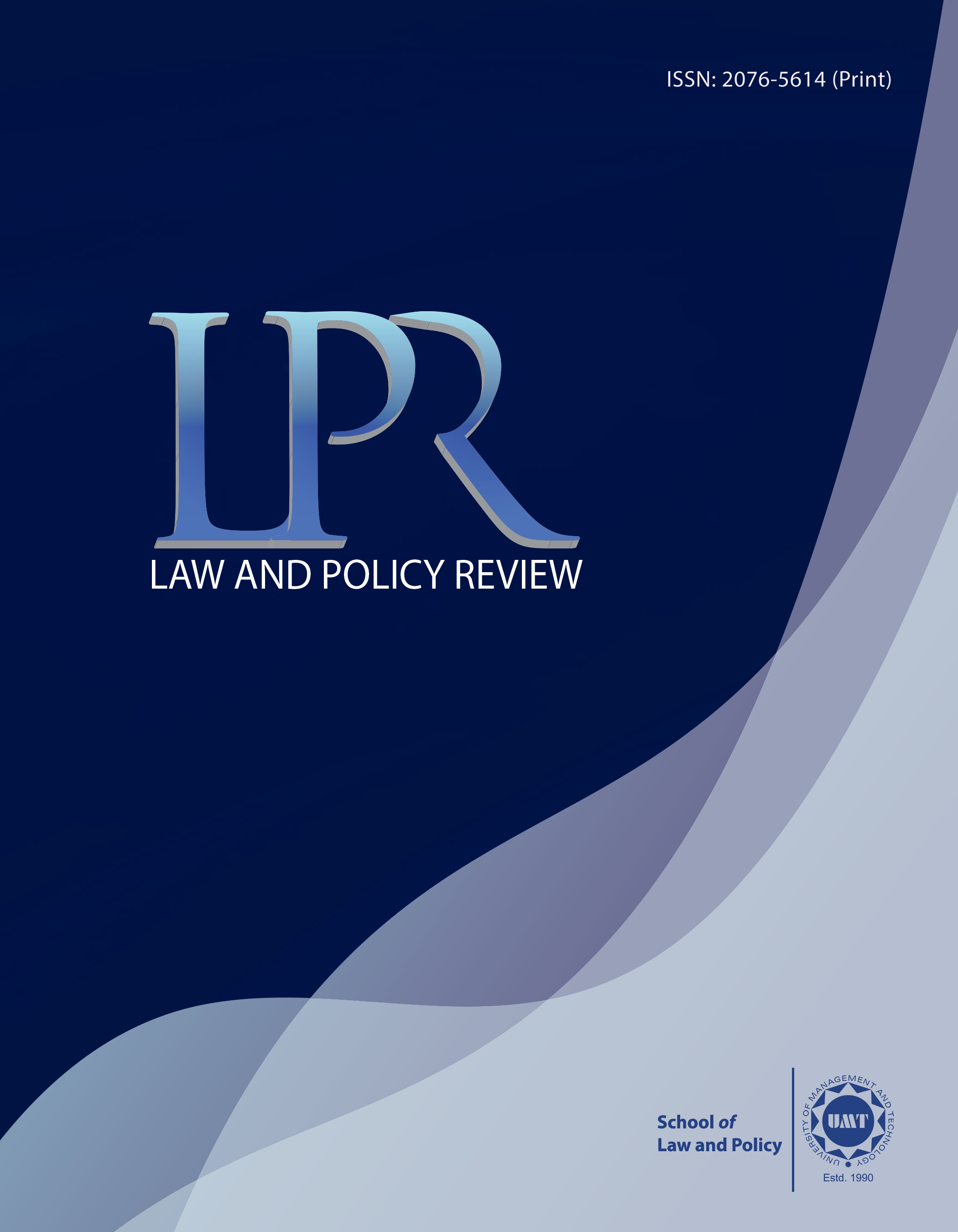Marbury V. Madison to Present Day: Tracing the Evolution and Significance of Judicial Review
Abstract
 Abstract Views: 0
Abstract Views: 0
The concept of judicial review signifies power vested in the superior judiciary by the judiciary itself where it can revisit the legislation. The ambit of the doctrine of judicial review stretches its boundary line to the decisions of administrative authorities as well. Marbury v. Madison was essentially seen as a vital case when it was decided since it laid down the foundation of the very power. It dynamically acquired quality and prominence, nonetheless, and is currently valued by people. It is considered to be a landmark case because it established the judicial organ as the co-equal part of the government. Many people consider judicial review as an essential part of the separation of powers. Its job as a foundation of judicial power holds a practically matchless spot of significance in judicial history. The judicial review was previously implicated in Bonham’s case. It was criticized by legal advisers, judges, and laymen as, according to them, allowing unelected judges to fix the legislation drawn up by the representative institution in a democratic country is hardly justified. The current study attempted to dig out Bonham’s case rationale alongside the arguments put forward in Marbury’s case where it emerged to be the powerful tool possessed by the judicial organ of the state.
Downloads
References
Albertsworth, E. F. (1921). Judicial review of administrative action by the federal supreme court. Harvard Law Review, 35(2), 127–153. https://doi.org/10.2307/1328196
Barnett, H. (2013). Constitutional and administrative law (10th ed.). Routledge.
Cappellett, M. (1970). Judicial review in comparative perspective. California Law review, 58(5), 1017–1053. https://doi.org/10. 2307/3479676
Chairman Regional Transport Authority Rawalpindi V/S Pakistan Mutual Insurance Company Ltd. Rawalpindi (PLD. SC 14, 1991).
Chen, T. G. (2003). Judicial review in new democracies: Constitutional courts in Asian cases. Cambridge University Press.
Col (Ret) Ayub Ali Rana v. Dr. Carlites Pune and another, 630 (SC 2002).
Collector of Customs v Pakistan Petroleum Ltd, 84 (Quetta 2002).
Corwin, E. S. (1910). The establishment of judicial review. The Michigan Law Review, 9(2), 102–125. https://doi.org/10.2307/1276638
Davis, K. C. (1966). Judicial control of administrative action: A review. Columbia Law Review, 66(4), 635–678.
Fallon, R. H., Jr., Manning, J. F. Meltzer, D. J., & Shapiro, D. L. (2021). The federal courts and the federal system. West Academic Publishing.
Friedman, B. (2009). The will of the people: How public opinion has influenced the supreme court and shaped the meaning of the constitution. Farrar, Straus and Giroux.
Habib, D. I. (2020a). The basic structure of the constitution of Pakistan and judicial review of legislative actions. Journal of Historical Studies, 6(1), 91–103.
Habib, R. I. (2020b). Evolution and exercise of the power of judicial review of executive actions in Pakistan. Review Of Education, Administration and Law, 3(1), 1–10. https://doi.org/10.47067/real.v3i1.16
Langer, L. (2002). Judicial review in state supreme courts: A comparative study. SUNY Press.
Loveland, P. I. (2012). Constitutional law, administrative law, and human rights (6th ed.). Oxford University Press.
Moloney, N. (1999). Introduction to judicial review in Pakistan. Judicial Review, 4(3), 201–205. https://doi.org/10.1080/10854681. 1999.11427078
Otter, R. C. (2009). Judicial review in an age of moral pluralism. Cambridge University Press.
Redish, M. H. (1980). Judicial review and judicial power in the supreme court. University of Chicago Press.
Rosenberg, G. N. (2008). The hollow hope: Can courts bring about social change? University Of Chicago Press.
Ryan, M. (2014). Unlocking constitutional and administrative law (3rd ed.). Routledge.
Seefeld, G. H. (1940). Judicial review of administrative decisions. Marquette Law Review, 24(2), 61–80.
Smith, J. A. (2021). Judicial review and administrative discretion: Balancing powers in the legal system. Oxford University Press.
Street, A. (2013). Judicial review and rule of law, who is in control? The Constitution Society. https://consoc.org.uk/wp-content/uploads/ 2013/12/J1446_Constitution_Society_Judicial_Review_WEB-22.pdf
University of the Punjab v. Muhammad Aslam Bora, Advocate, 658 (Lahore 1988).
Venzke, A. V. (2015). Constitutional courts as positive legislators: A comparative law study. Oxford University Press.
Wolfe, C. (2019). Judicial review and American democracy. University Press of Kansas.
Copyright (c) 2023 Aiman Bashir, Yasir Rashid Khan

This work is licensed under a Creative Commons Attribution 4.0 International License.
LPR follow an open-access publishing policy and full text of all published articles is available free, immediately upon publication of an issue. The journal’s contents are published and distributed under the terms of the Creative Commons Attribution 4.0 International (CC-BY 4.0) license. Thus, the work submitted to the journal implies that it is original, unpublished work of the authors (neither published previously nor accepted/under consideration for publication elsewhere). On acceptance of a manuscript for publication, a corresponding author on the behalf of all co-authors of the manuscript will sign and submit a completed the Copyright and Author Consent Form.





